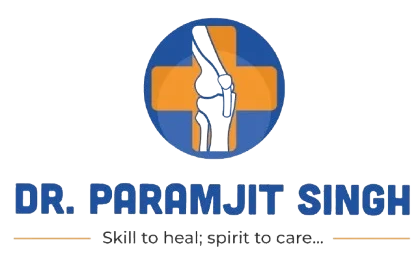Shoulder Procedures
Shoulder Reconstruction Surgery

Shoulder reconstruction surgery is an operative procedure in which stretched or torn soft-tissue structures that surround the shoulder joint such as the capsule, ligaments, and cartilage, are repaired to secure the shoulder joint in place. The procedure is mainly employed for the treatment of individuals with shoulder instability, to prevent recurrent joint dislocations, and to restore normal shoulder range of motion and function.
Shoulder Joint Replacement
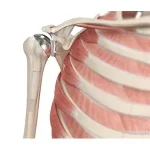
Total shoulder replacement surgery is performed to relieve symptoms of severe shoulder pain and disability due to arthritis. In this surgery, the damaged articulating parts of the shoulder joint are removed and replaced with artificial prostheses. Replacement of both the humeral head and the socket is called a total shoulder replacement.
Reverse Shoulder Replacement
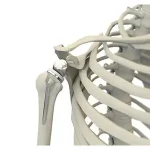
Conventional surgical methods such as total shoulder joint replacement are not very effective in the treatment of rotator cuff arthropathy. Reverse total shoulder replacement is an advanced surgical technique specifically designed for rotator cuff tear arthropathy, a condition where you suffer from both shoulder arthritis and a rotator cuff tear.Conventional shoulder replacement surgery involves replacing the ball of the humerus with a metal ball and the glenoid cavity of the shoulder blade (scapula) with a plastic socket.
Rotator Cuff Repair
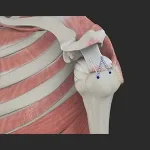
The rotator cuff is a group of 4 muscles in the shoulder joint including the supraspinatus, infraspinatus, teres minor, and subscapularis. These muscles originate in the scapula and attach to the head of the humerus through tendons. The rotator cuff forms a sleeve around the humeral head and glenoid cavity, providing stability to the shoulder joint while enabling a wide range of movements.
Shoulder Labrum Reconstruction
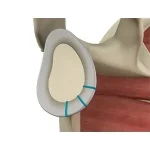
The shoulder joint is a ball and socket joint. A ball at the top of the upper arm bone (the humerus) fits neatly into a socket, called the glenoid, which is part of the shoulder blade (scapula). The labrum is a ring of fibrous cartilage surrounding the glenoid, which helps in stabilizing the shoulder joint. The biceps tendon is attached inside the shoulder joint at the superior labrum of the joint. The biceps tendon is a long cord-like structure that attaches the biceps muscle to the shoulder and helps to stabilize the joint.
Patient-Specific Shoulder Replacement
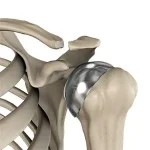
Shoulder replacement, also referred to as shoulder arthroplasty, is a procedure in which the damaged articulating parts of the shoulder joint are removed and replaced with artificial prostheses to restore shoulder function.The shoulder is a highly movable body joint that allows various movements of the arm. It is a ball-and-socket joint, where the head of the humerus (upper arm bone) articulates with the socket of the scapula (shoulder blade) called the glenoid. The two articulating surfaces of the bones are covered with cartilage, which prevents friction between the moving bones.
Shoulder Stabilization
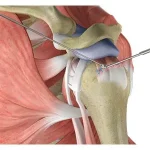
Shoulder instability is a chronic condition that causes frequent dislocation of the shoulder joint. A dislocation occurs when the end of the humerus (the ball portion) partially or completely dislocates from the glenoid (the socket portion) of the shoulder. A partial dislocation is referred to as a subluxation while a complete separation is referred to as a dislocation. The repeated dislocation of the humerus out of its socket is called chronic shoulder instability.
Shoulder Arthroscopy
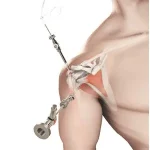
The shoulder joint is made up of a ball and socket joint, where the head of the humerus (upper arm bone) articulates with the socket of the scapula (shoulder blade), which is called the glenoid. The two articulating surfaces of the bones are covered with cartilage, which prevents friction between the moving bones, enabling smooth movement. Tendons and ligaments around the shoulder joint provide strength and stability to the joint.
Shoulder Capsular Repair
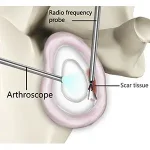
Shoulder capsular repair is a surgical procedure to treat shoulder instability that does not improve with more conservative or non-surgical methods.The shoulder joint, also referred to as the glenohumeral joint, is a ball and socket joint, formed by the bone of the upper arm (humerus), which articulates with the shoulder blade (scapula) in a cavity called the glenoid fossa. A group of 3 ligaments called the glenohumeral ligaments form a capsule around the shoulder joint and connect the head of the upper arm bone to the glenoid cavity of the shoulder blade.
Shoulder Fracture Care
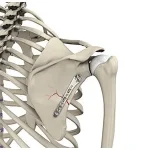
A break in the bone that makes up the shoulder joint is called a shoulder fracture. The clavicle (collarbone) and end of the humerus (upper arm bone) closest to the shoulder are the bones that usually are fractured. The scapula, or shoulder blade, is not easily fractured because of its protective cover of surrounding muscles and chest tissue.Clavicle and humerus fractures can occur by a direct hit from a motor vehicle accident, collision or fall. A fracture of the scapula can occur by high-energy trauma during an accident from a high-speed motor vehicle.
Pectoralis Major Tears/Repairs
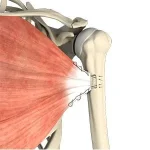
A tear in the pectoralis major muscle occurs when the tendon attaching the muscle to the upper arm bone is damaged as a result of trauma or injury. In the case of a rupture, operative treatment is employed for repairing the torn muscle in active and young patients irrespective of the chronicity of the injury. The most commonly used techniques to repair a pectoralis major tear are suture anchors and bone tunnel procedures.Pectoralis muscle tears occur when a force goes through the muscle and tendon that is greater than they can withstand.
